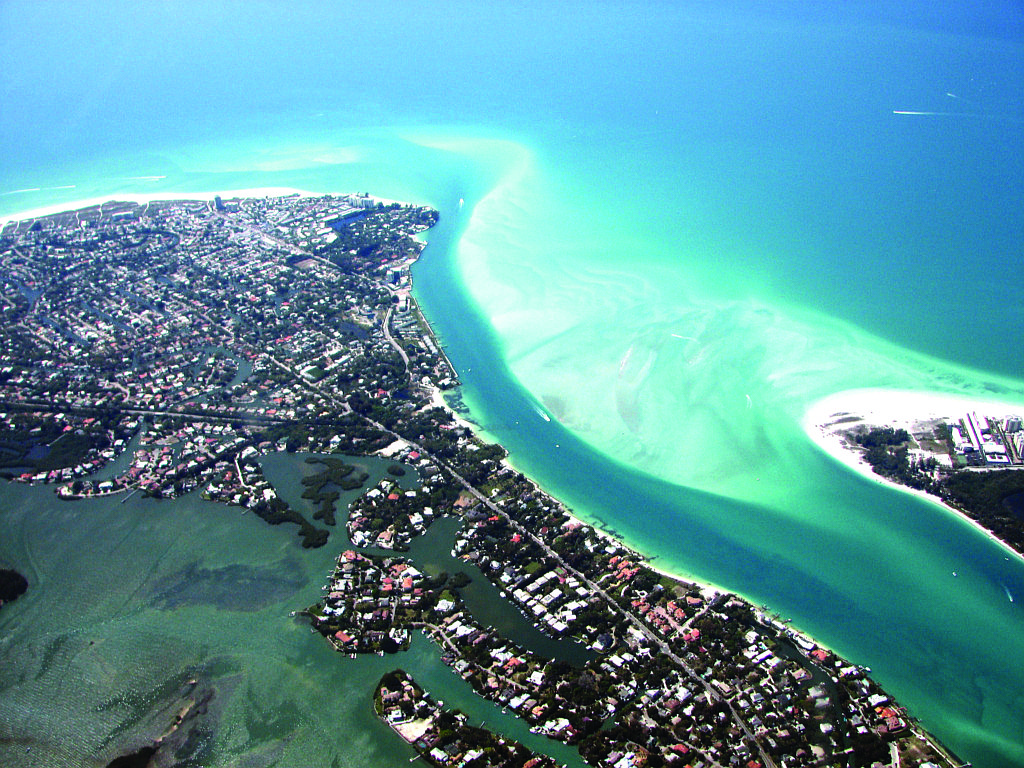- April 27, 2024
-
-
Loading

Loading

Will dredging Big Pass lead to more traffic on Siesta Key during high season?
That was one of the scenarios panelists pitched during an event aimed at digging deeper into the Lido Beach renourishment project Monday, at St. Boniface Church.
The panel discussed how dredging an area can cause sand to settle differently, making a channel more shallow than it was before dredging.
“Deeper draft vessels aren’t going to be able to get out Big Pass, and they’re going to have to go 15 miles either up north or south,” said Save Our Siesta Sand 2 (SOSS2) Chairman Peter van Roekens during his portion of the lecture. “They will require longer and more bridge openings, and if you’re satisfied with traffic this year — just wait.”
The Siesta Key Chamber of Commerce, the Siesta Key Association, the Siesta Key Village Association and the Siesta Key Condominium Council hosted van Roekens, former Sarasota County Environmental Services Director Rob Patten, environmental activist Jono Miller and Robert Young, a coastal geologist retained by SOSS2.
The four speakers each pointed to what they claim are questionable aspects of the $22.2 million U.S. Army Corps of Engineers project, while audience members rallied behind Young’s critique of the Corps’ models and data predicting no harm for Siesta’s beaches.
“The models are interesting, but in my view cannot be used for project design,” said Young, who SOSS2 hired to analyze the plans.
The island organizations planned the meeting in response to an April 15 open house hosted by the city of Sarasota and the Corps, during which both presented justification for mining more than 1 million cubic yards of sand from the never-been-dredged channel, followed with another 615,000 cubic yards every five years until 2065 — 7.15 million cubic yards in total, according to the draft environmental assessment.
Siesta Chamber Executive Director Debra Lynn-Schmitz said the open house was too technical, and the recent panel event would give a clearer view of the project — and present another viewpoint.
Enter Young, who runs a joint program between Western Carolina University and Duke University that studies shoreline projects.
“We’ve spent a lot of time analyzing similar coastal engineering projects all over the world,” said Young, who has published critiques of Corps projects in the New York Times, including an Aug. 22 editorial blasting a $207 million plan to stabilize Fire Island in New York.
“It is hard to understand why this project was allowed to move forward without a more detailed investigation in the form of an environmental impact statement,” Young wrote. “The Corps relied on old science or no science to build a case for the benefits.”
Van Roekens, Miller and other opponents of dredging Big Pass have called for an environmental impact statement for the Lido project.
Although van Roekens declined to disclose how much SOSS2 has paid to hire Young, he said the organization would keep the coastal geologist on retainer if it decides to pursue legal action.
SOSS2 has raised about $45,000 so far, but will likely need to double that if the issue goes to court, van Roekens said.
But Young cautioned attendees about jumping too quickly into legal action.
“There have been times when projects have been abandoned because of overwhelming public concern,” Young said.
Mother load
Lido Beach has been renourished with more than 3.7 million cubic yards of sand 15 times at a cost of $31.2 million adjusted to 2013 dollars, according to the Program for the Study of Developed Shorelines database.
The U.S. Army Corps of Engineers aims to add another 7.2 million cubic yards of sand over the next 50 years.
How much sand is that?
It would take 205,555 dump trucks to hold the amount of material that has been placed on Lido Beach over the years, and another 400,000 trucks for the proposed renourishment.
State snapshot
Here are the most renourished beaches in the state since the 1950s in terms of sand volume and dollars. Lido Key is second in amount of money spent and ties for second place in terms of number of renourishments.
1. Lake Worth Beach
17 renourishments
5.8 million cubic yards of sand
$28.3 million
2. Fort Pierce Beach
15 renourishments
3.9 million cubic yards of sand
$32.2 million
2. Lido Key
15 renourishments
3.6 million cubic yards of sand
$34.2 million
3. Jupiter Island
14 renourishments
14.6 million cubic yards of sand
$67.6 million
4. Treasure Island/Sunset Beach
13 renourishments
2.7 million cubic yards of sand
$30.7 million
State totals
465 renourishments
252.2 million cubic yards of sand
$2.3 billion